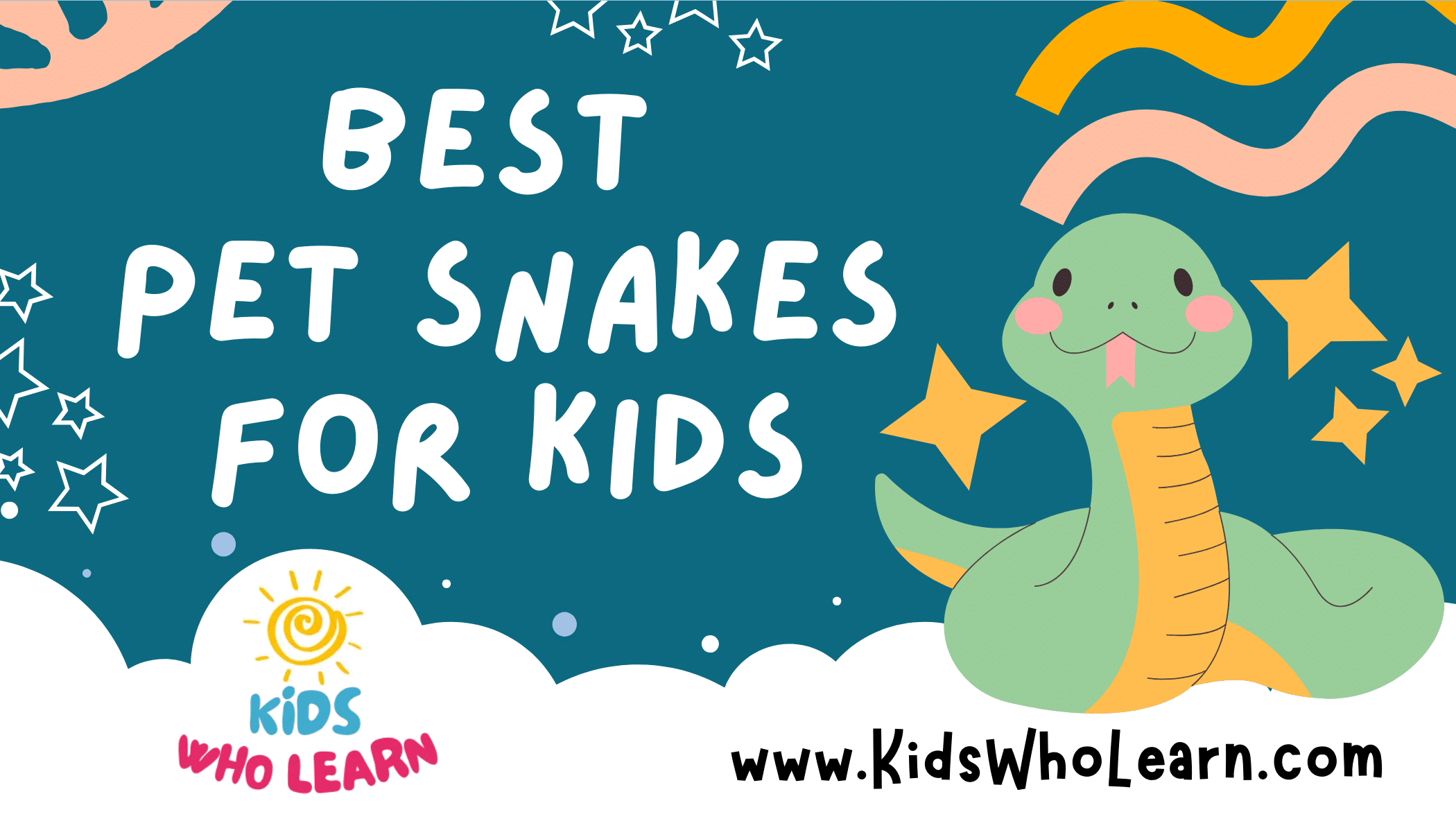Selecting a pet bird for a child can be a wonderful way to introduce them to the joys of caring for another living being. Pet birds are not just vibrant and lively companions; they can also teach kids about responsibility and empathy. When choosing the best bird for your child, it is essential to consider the bird’s temperament and care requirements. Birds suitable for kids are typically gentle, friendly, and less demanding, making them ideal first pets that can grow with your family.
While considering a feathery companion for your child, it’s important to understand the essentials of bird care. Proper nutrition, a suitable habitat, and regular veterinary check-ups are crucial for a bird’s health. Moreover, giving your child the necessary guidance and support in taking care of their new pet will not only ensure the bird’s well-being but also strengthen your child’s responsibility skills. In addition to the practicalities of care, the emotional benefits of pet birds should not be overlooked. They can provide companionship, reduce stress, and even encourage social interaction.
Key Takeaways
- Choosing a pet bird for kids requires considering the bird’s friendliness and the child’s ability to assume care responsibilities.
- Bird care essentials include proper nutrition, a suitable habitat, and regular health check-ups.
- Pet birds can offer emotional benefits and contribute to a child’s development of empathy and responsibility.
Choosing the Right Bird for Your Child
Selecting a pet bird for your child involves understanding the bird’s social behavior, life expectancy, and care needs. Let’s explore the vital factors and some suitable bird species.
Factors to Consider
When you’re thinking about getting a pet bird, it’s essential to match the bird’s temperament and needs with your child’s personality and lifestyle.
- Temperament: Look for birds known for being gentle and friendly. A social, tolerant bird can form a strong bond with your child.
- Intelligence: Intelligent birds can be delightful but may require more interaction and mental stimulation to stay happy.
- Attention: Some birds demand more attention than others. Assess how much time your child can dedicate daily to interaction.
- Space: The size of the bird dictates the cage size. Ensure you have adequate space at home.
- Care: Consider the grooming necessities, dietary requirements, and cleaning needed for the health and well-being of the bird.
- Life Expectancy: Birds can live for many years. Longevity means a long-term commitment to their care.
- Noise Level: Some bird species are louder than others. Assess your household’s tolerance for noise.
Popular Kid-Friendly Bird Species
Let’s highlight some pet bird species that are often a good fit for children, considering the factors mentioned above.
| Species | Temperament | Intelligence | Attention Needed | Space Required | Care Level | Life Expectancy | Noise Level |
|---|---|---|---|---|---|---|---|
| Budgerigar (Budgie) | Friendly, Social | High | Moderate | Small | Low | 5-10 years | Moderate |
| Cockatiel | Gentle, Affectionate | High | Moderate to High | Medium | Moderate | 10-15 years | Moderate |
| Canary | Independent | Moderate | Low | Small | Low | 5-10 years | Low to Moderate |
| Finch | Social | Moderate | Low | Small to Medium | Low | 5-10 years | Low |
| Parrotlet | Friendly, Social | High | Moderate | Small to Medium | Moderate | 10-20 years | Low to Moderate |
Remember to interact with the species you’re considering and consult with an avian vet or a professional bird breeder to ensure the best match for your family.
Understanding Bird Care Essentials
Before bringing a feathered friend into your home, it’s crucial to understand the regular care they require and the dedication involved. Birds are not just visually appealing pets; they need consistent daily upkeep and a vigilant eye on their health.
Daily Maintenance and Caretaker Commitment
Birds thrive on routine and a clean environment. Daily maintenance is a commitment that includes:
- Feeding: Provide your bird with a balanced diet consisting of pellets, fresh fruits, and vegetables. Ensure fresh water is always available.
- Cage Cleaning: Remove waste and food debris daily. A thorough cleaning of the cage should be done weekly to prevent bacterial growth and maintain hygiene.
Toys, swings, and perches must be checked daily for wear and tear to ensure your bird’s safety. Replacing them regularly avoids potential hazards.
Health and Veterinary Needs
Being proactive about your bird’s health is essential. Key health considerations include:
- Regular Check-ups: Schedule annual visits to an avian veterinarian for wellness exams.
- Signs of Illness: Watch for changes in behavior or appearance which may indicate health issues, such as feather plucking or respiratory distress.
Incorporate a variety of toys and varied perch sizes in the cage to promote exercise and mental stimulation, essential for your bird’s well-being.
The Benefits of Birds as Pets for Kids
Bird ownership can foster your child’s emotional growth and educational development, through the nurturing of social bonds and the learning of responsibility.
Emotional and Social Development
Birds, particularly social birds, can be affectionate companions, offering comfort and emotional support to your child. The act of caring for a pet bird encourages responsibility and empathy. By interacting with a pet bird, children learn to recognize and understand the bird’s needs and behaviors, such as:
- When a bird is hungry or thirsty
- Signs of a bird wanting to play or interact
- Understanding a bird’s body language for comfort or distress
Having a pet bird also provides opportunities for children to socialize with others who share similar interests, such as in bird clubs or online communities where they can learn from more experienced bird owners.
Educational Aspects of Pet Ownership
Caring for a bird can be intellectually stimulating for your child, as birds often display a range of intelligent behaviors. For instance:
| Interaction Type | Related Skills Developed |
|---|---|
| Feeding | Time management, routine building |
| Training | Patience, positive reinforcement techniques |
| Cage Maintenance | Organization, cleanliness |
Through these interactions, children enhance their cognitive abilities by learning to plan and execute tasks related to the care of their feathered friend. Additionally, birds with the capacity to mimic sounds and words can make language learning amusing, helping improve your child’s auditory and verbal skills.
Specific Bird Species Profiles
Choosing the right pet bird for your child involves understanding the specific care requirements and personalities of various species. Below you will find detailed profiles that will aid in selecting a bird that aligns with your child’s lifestyle and preferences.
Budgies
Personality: Budgies, also known as parakeets, are sociable and relatively easy for children to care for. Their friendly disposition makes them excellent companions.
Care: Ensure they have a spacious cage and daily interaction. Feed them a mix of seeds, pellets, and fresh vegetables.
Color and singing: Budgies come in a variety of colors and are known for their cheerful chirping, which is generally not too loud, making them suitable for indoor living.
Cockatiels
Personality: Cockatiels are gentle and affectionate birds, known for their ability to form strong bonds with their owners. They enjoy being handled and stroked.
Care: They require a well-balanced diet of seeds, pellets, and fresh fruits. Regular grooming and a cage with space to fly are essential.
Color and singing: These birds have distinctive crests and come in several color variations. Cockatiels are known for their whistling and can learn tunes.
Parakeets
Personality: Parakeets are active and playful, making them engaging pets for children. They thrive on interaction and can learn to do simple tricks.
Care: A parakeet needs a clean cage, a varied diet, and toys for mental stimulation.
Social needs: They are social creatures and may require a companion parakeet for company.
Finches
Personality: Finches are small and less hands-on, perfect for kids who enjoy watching more than interacting. They are content in their own social groups.
Care: They require minimal interaction but need a large cage to fly about freely and a diet rich in seeds and greens.
Singing: Finches are known for their melodic singing, which can be a delightful background sound in the home.
Canaries
Personality: Canaries are known for their vibrant color and beautiful singing but are not typically hands-on pets.
Care: These birds prefer a stable environment and their own space. They need a balanced diet, including formulated pellets, seeds, and fresh greens.
Singing: Males are particularly known for their robust and melodious songs which can be quite entertaining.
Special Considerations for Bird Ownership
Choosing the right pet bird involves understanding the commitment you’re making. Birds require specific amounts of time and an environment that caters to their needs for a healthy life.
Time and Attention Requirements
Birds are social creatures and need daily interaction to remain happy and well-adjusted. Your daily commitment should be:
- Minimal Interaction: At least 30 minutes for birds that need less interaction like finches.
- High Interaction: Several hours for parrots and other birds that thrive with more social engagement.
Create a routine that includes time for feeding, cleaning, and bonding. Consistent interaction helps prevent behavioral issues and fosters a stronger bond between you and your pet bird.
The Physical Environment: Space and Safety
For your bird to thrive, the right space and safety measures are crucial:
Space Requirements:
- Apartments: A small bird that doesn’t make much noise, such as a budgie or a canary, might be suitable.
- Enclosure: Must be large enough for the bird to spread its wings and move about freely.
Safety Measures:
- Windows and doors should remain closed or have secure screens.
- Kitchen hazards include toxic fumes from non-stick cookware and accessible food.
- Other pets can pose a threat; ensure your bird’s enclosure is safe from curious cats or dogs.
Ensure the bird has space away from drafts and direct sunlight, and the ambient temperature is consistent and appropriate for the species. Regularly check the bird’s living area for any potential hazards and remove them promptly.
Training and Interaction
Training your pet bird can be a rewarding experience for both you and your child. Through consistent practice and positive reinforcement, your pet bird can learn tricks, respond to commands, and develop a meaningful bond with its human family.
Teaching Tricks and Commands
When teaching your pet bird tricks and commands, start with simple tasks to build confidence. Use straightforward commands and pair them with a treat or praise to encourage your bird.
- Steps for Teaching Tricks:
- Choose a quiet environment to minimize distractions.
- Start with a simple trick like “step up” onto your hand.
- Use a command word and physical gesture together.
- Reward immediately after the bird performs the trick.
- Common Commands to Train:
- Step up: Encourages the bird to step onto your hand.
- Turn Around: Teaches the bird to turn in a circle.
- Wave: Instructs the bird to lift a foot as if waving.
Consistent, brief training sessions are preferable. Birds, especially species like budgerigars or cockatiels, are highly trainable and enjoy the mental stimulation.
Communication and Bonding
Interacting with your pet bird forms the foundation of a strong relationship. Engaging in regular play and conversation can enhance bonding and even enable some birds to learn to talk or whistle.
- Techniques for Effective Communication:
- Speak in a calm, friendly tone to create a positive association.
- Repeat words and whistles you want your bird to learn.
- Acknowledge and praise any attempts at mimicry or interaction.
| Activity | Description | Purpose |
|---|---|---|
| Talking | Repeating words or phrases to your bird. | Encourages language acquisition. |
| Whistling | Softly whistling tunes or melodies. | Facilitates vocal learning and is playful for the bird. |
| Playing | Engaging in games with toys or simple objects. | Strengthens bond and provides mental and physical exercise. |
Invest time in daily interactions to nurture a responsive and playful companion. Parrots and similar species are known for their ability to mimic speech and sounds; make frequent speaking and whistling part of your routine to help your bird learn. Remember, patience and persistence are key in fostering strong communication skills.
Common Challenges and Solutions
Choosing a pet bird for your child involves preparing for a variety of challenges. Your main concerns will likely revolve around behavioral issues and maintaining a clean environment free from allergens. Below are specific strategies to tackle these common hurdles.
Behavioral Issues
Aggression: It’s not uncommon for pet birds to exhibit aggressive behavior, which can be alarming to children. This often stems from the bird feeling threatened or territorial. To mitigate aggression, ensure your bird has ample time outside of its cage to exercise and play. Create a consistent routine for handling and interactions to build trust.
Shyness: If a bird is shy, it may require a more gentle approach. Encourage your child to speak softly to the bird and offer treats from their hand to foster a bond. Create a calm environment to avoid overwhelming the bird and allow it to approach on its terms.
- Schedule: Maintain a regular schedule of socialization and handling for predictability.
- Environment: Keep the bird’s environment stable and avoid sudden changes that may instigate fear.
Managing Allergens and Cleanliness
Allergens: Birds can produce dander, which is a common allergen. To minimize exposure:
- Choose a species known for less dander, like budgies or finches.
- Use air purifiers to reduce airborne allergens.
- Clean the cage and the bird’s area regularly to prevent buildup.
Cleanup Work: Keeping your bird’s space clean is crucial for health. Here’s how you can stay on top of it:
- Daily Maintenance: Remove droppings and food debris every day to prevent bacteria and odor.
- Weekly Clean: Perform a thorough cage cleaning once a week. Wash feeders and perches, and replace cage liners.
- Materials: Equip yourself with proper cleaning materials that are bird-safe to ensure an effective and non-toxic clean-up process.
By directly addressing behavioral concerns and hygiene matters, you create a safer and more enjoyable environment for both your child and their feathered friend.
Frequently Asked Questions
When selecting a pet bird for children, consider species known for their calm demeanor, manageable size, and friendly nature. Here you’ll find answers to common questions to help you make the best choice for your family.
What are the quietest pet bird species suitable for children?
Budgerigars and finches are among the quietest pet bird species. Their soft chirps are pleasant and not likely to disturb the household.
What are the most appropriate small bird species for children to keep as pets?
Small birds like parakeets, cockatiels, and lovebirds are ideal for children due to their manageable size and generally gentle temperament.
Which breeds of flightless birds make good pets for kids?
Domesticated breeds like the button quail can be good pets as they are small, docile, and unable to fly long distances, making them less demanding in terms of space.
What are some common pet birds that are known to be child-friendly?
Cockatiels, parakeets, and canaries are known for being child-friendly due to their social nature and ease of care.
Can you recommend bird species that are able to be kept comfortably without a cage?
While all birds require a safe, enclosed space, some species like the Diamond Dove can thrive in a well-secured aviary or large flight cage where they have more freedom to move about.
Which talking bird species are known for being particularly suitable for kids?
African Grey Parrots and Budgerigars are two talking bird species suitable for older children who can handle them gently and are interested in teaching them to speak.











